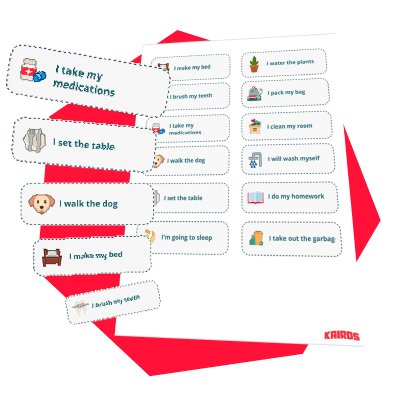Fostering emotional resilience in children with ADHD
Emotional resilience—the ability to adapt to stress and adversity—is essential for children with ADHD. These children often experience heightened emotional sensitivity, impulsivity, and difficulty managing frustration, making emotional resilience particularly important. This blog explores strategies to help parents foster emotional resilience in their children with ADHD, enabling them to navigate challenges with greater ease and confidence.
Understanding emotional resilience and ADHD
Children with ADHD often face emotional challenges, such as:
- Heightened Emotional Sensitivity: They may experience emotions more intensely and react strongly to stress or criticism.
- Impulsivity: Difficulty controlling impulses can lead to emotional outbursts or inappropriate reactions.
- Frustration and Low Self-Esteem: Struggling with academic or social tasks can result in frequent frustration and a negative self-image.
Building emotional resilience helps children cope with these challenges and develop a positive outlook on life.
Creating a supportive and nurturing environment
A supportive home environment is the foundation of emotional resilience. Here’s how to create a nurturing atmosphere:
Foster Open Communication: Encourage your child to express their feelings openly and without judgment. Regularly check in with them about their day and listen actively to their concerns.
Provide Consistent Routines: Consistent routines help children with ADHD feel secure and reduce anxiety. Establish regular schedules for meals, homework, and bedtime to create a predictable environment.
Show Unconditional Love and Support: Reinforce your love and support regardless of their behavior or performance. Celebrate their strengths and achievements, no matter how small.
Teaching emotional regulation techniques
Helping your child learn to manage their emotions is crucial for building resilience. Here are some effective techniques:
Mindfulness and Relaxation: Teach your child mindfulness and relaxation techniques, such as deep breathing, progressive muscle relaxation, or guided imagery. These practices can help them stay calm and centered during stressful situations.
Identify and Label Emotions: Help your child identify and label their emotions. Use tools like emotion charts or feelings flashcards to teach them to recognize and name different emotions.
Develop Coping Strategies: Work with your child to develop coping strategies for managing difficult emotions. For example, teach them to take a break when they feel overwhelmed, use positive self-talk, or engage in a calming activity like drawing or listening to music.
Encouraging problem-solving skills
Problem-solving skills enable children to approach challenges with a solution-oriented mindset. Here’s how to encourage these skills:
Model Problem-Solving: Demonstrate effective problem-solving in your daily life. Talk through your thought process when facing a challenge and involve your child in finding solutions.
Use Real-Life Scenarios: Role-play real-life scenarios with your child to practice problem-solving. Discuss different ways to handle conflicts with peers, manage time, or approach a difficult homework assignment.
Promote Independence: Encourage your child to take on age-appropriate responsibilities and make decisions independently. This fosters a sense of competence and confidence in their ability to handle challenges.
Building social support networks
Social support from peers, family, and community is vital for emotional resilience. Here’s how to help your child build strong social connections:
Encourage Friendships: Facilitate opportunities for your child to make and maintain friendships. Arrange playdates, encourage participation in group activities, and support their involvement in extracurriculars.
Join Support Groups: Connect with other families of children with ADHD through support groups or online communities. Sharing experiences and advice can provide valuable support and a sense of belonging.
Seek Professional Support: If needed, seek the help of a therapist or counselor who specializes in working with children with ADHD. Professional support can provide additional strategies and a safe space for your child to explore their emotions.
Promoting a growth mindset
A growth mindset—the belief that abilities and intelligence can be developed through effort and learning—fosters resilience and perseverance. Here’s how to promote a growth mindset in your child:
Praise Effort and Persistence: Focus on praising your child’s effort, strategies, and persistence rather than their innate abilities. For example, say, “I’m proud of how hard you worked on that project,” rather than, “You’re so smart.”
Encourage Learning from Mistakes: Teach your child to view mistakes as opportunities for learning and growth. Discuss what they can learn from a challenging experience and how they can apply those lessons in the future.
Set Realistic Goals: Help your child set realistic and achievable goals. Break larger goals into smaller, manageable steps and celebrate their progress along the way.
Conclusion
Fostering emotional resilience in children with ADHD requires a combination of supportive environments, emotional regulation techniques, problem-solving skills, strong social connections, and a growth mindset. By implementing these strategies, parents can help their children navigate challenges with confidence and develop the resilience needed to thrive. Remember, building emotional resilience is a gradual process that requires patience, consistency, and ongoing support.
For further reading, consider books like “The Whole-Brain Child” by Daniel J. Siegel and Tina Payne Bryson, which offers practical strategies for nurturing your child’s developing mind and building resilience
